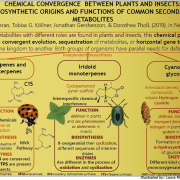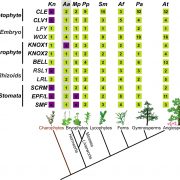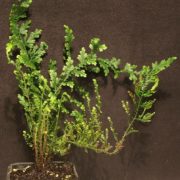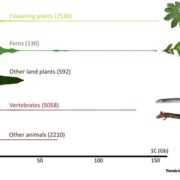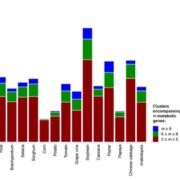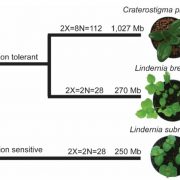Review: Genome evolution in plants and the origins of innovation
 Land plants have enormous diversity; however we do not fully understand how this has arisen. In this review article James Clark discusses how genome dynamics and gene loss contribute to genome evolution and the generation of diversity and complexity. He explains how genome evolution is non-homogenous across time with specific periods where plants underwent rapid evolution. One period is the emergence of land plants, where there was an expansion of pre-existing gene families and the generation of novel gene families to allow the colonization of the land. In this process horizontal gene transfer played an important role, particularly for the evolution of genes involved in stress response. In addition to gene gain, gene loss has had a major influence on plant evolution, particularly within bryophytes. One example is the genes involved in stomata formation, which were present in a bryophyte ancestor but have since been lost in liverworts and some mosses and hornworts. This loss has led to generation of phenotypic diversity for instance the development of the novel gas exchange structure, the air pore, in liverworts. Hence, Clark argues that gene loss plays a significant role in generating diversity and needs to be carefully considered in plant evolution. (Summary by Rose McNully @Rose_McN) New Phytol. 10.1111/nph.19242
Land plants have enormous diversity; however we do not fully understand how this has arisen. In this review article James Clark discusses how genome dynamics and gene loss contribute to genome evolution and the generation of diversity and complexity. He explains how genome evolution is non-homogenous across time with specific periods where plants underwent rapid evolution. One period is the emergence of land plants, where there was an expansion of pre-existing gene families and the generation of novel gene families to allow the colonization of the land. In this process horizontal gene transfer played an important role, particularly for the evolution of genes involved in stress response. In addition to gene gain, gene loss has had a major influence on plant evolution, particularly within bryophytes. One example is the genes involved in stomata formation, which were present in a bryophyte ancestor but have since been lost in liverworts and some mosses and hornworts. This loss has led to generation of phenotypic diversity for instance the development of the novel gas exchange structure, the air pore, in liverworts. Hence, Clark argues that gene loss plays a significant role in generating diversity and needs to be carefully considered in plant evolution. (Summary by Rose McNully @Rose_McN) New Phytol. 10.1111/nph.19242


